Past exhibitions
Want a sneak peek of other items in our 200,000+ strong collection? View our previous exhibitions.
Time Traveller: Charles Lyell at Work
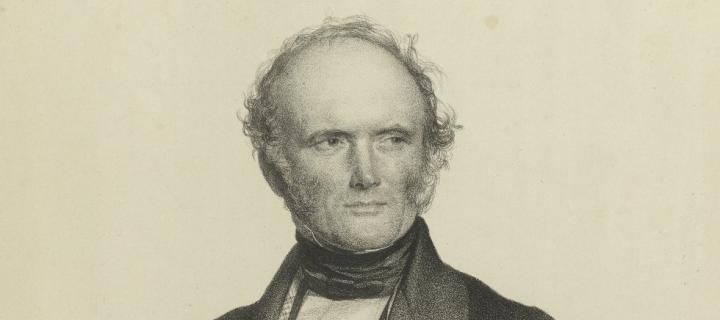
A Carrying Stream
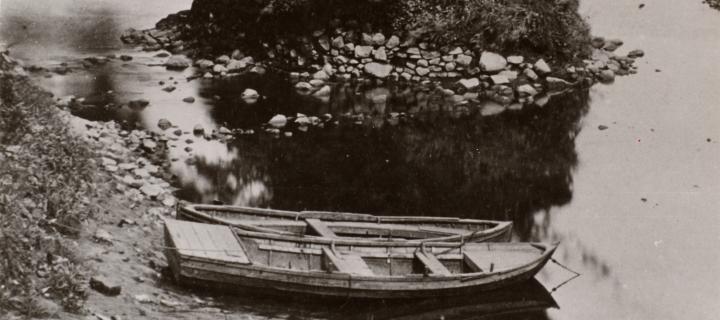
A Gathering of Leaves
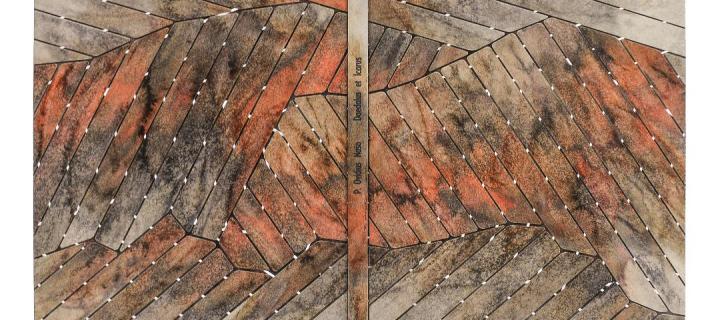
Robert Blomfield: Student of Light

Edina/Athena: The Greek Revolution and the Athens of the North, 1821–2021

Touching Stitches (November-February)
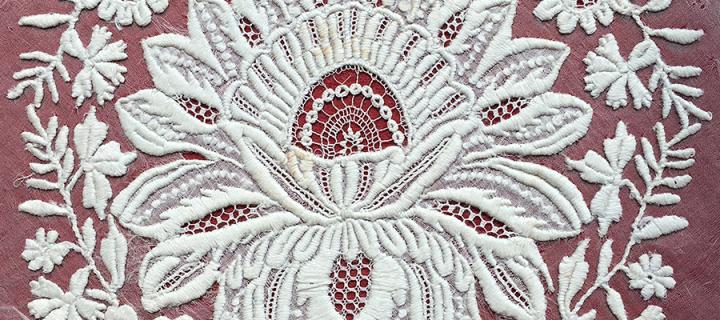
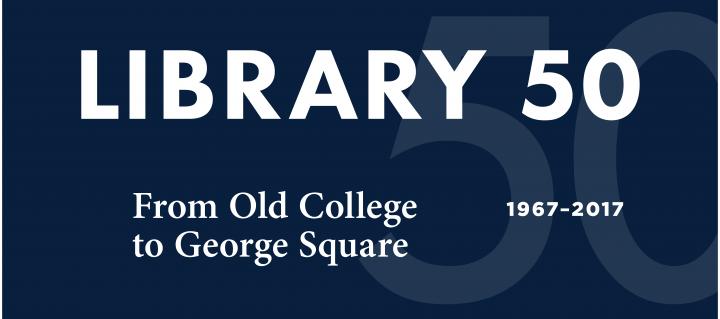
Library 50: From Old College to George Square
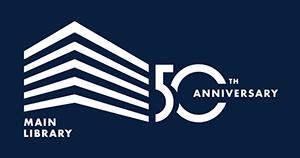
Opened in September 1967, this building was the University’s second purpose-built library. It was commissioned to replace the Playfair Library, sited in Old College, which no longer had the capacity to serve the expanding university. With a Project Committee established in 1950, the impetus for change preceded the 1960s expansion of the higher education sector. The architect had already been chosen - Spence Glover & Ferguson.
Librarian ERS Fifoot and architect JH Glover visited a number of libraries in the USA to inform a brief that was completed and approved in 1961-62. Negotiation with the University Grants Committee took some time, but was eventually achieved, with conditions. Other discussions with local planners also placed limitations on the project, particularly in relation to height.
The building was completed in 1967 and staff and collections moved in. The last to move was the contents of the Strong Room with Keeper of the Manuscripts, CP Finlayson, accompanying them in the van. The official opening took place in March the following year.
The following decades saw a number of low-level changes to the building, most noticeably the re-siting of the service desk from the middle, to the rear of the concourse. However, it is testament to the quality of the design and building materials, that the building required nothing significant until its refurbishment in the mid-2000s. Many of its original fixtures and fixings remain, still serviceable and compatible with a 21st century library.
Binks Trust Exhibition Wall, Centre for Research Collections, University of Edinburgh Main Library (6th Floor)
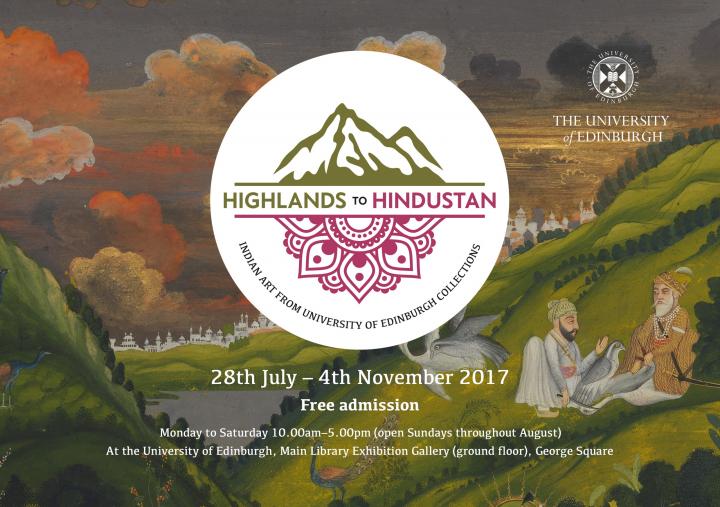
Highlands to Hindustan: Indian Art from University of Edinburgh Collections
Marking the 70th anniversary of India’s Independence, this exhibition reveals the artistic legacy of 50 objects from the Indian subcontinent and their journey to the collections of the University of Edinburgh. Produced over two millennia, the artworks in this exhibition showcase the Indian subcontinent’s rich and diverse cultural heritage.
Highlights include Buddhist sculptural fragments from the 3rd century, a Quran from the collection of Tipu Sultan and the 18th century Mahabharata, written in Sanskrit on a continuous roll of silk 72 metres long.
The exhibition runs 28 July - 4 November 2017, Monday to Saturday 10am-5pm and Sundays throughout August.
Exhibition Gallery, Main Library, George Square, Edinburgh, EH8 9LJ
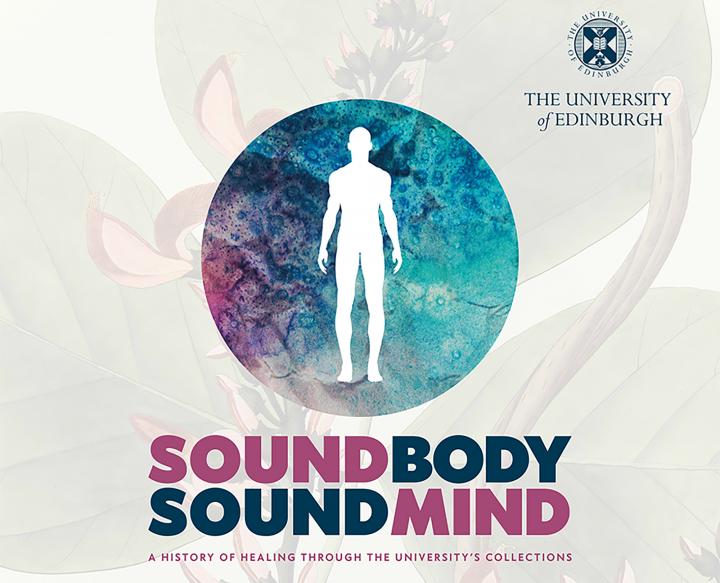
Sound Body Sound Mind: A history of healing through the University's Collections
7 April - 1 July 2017, Monday-Friday, 9am – 5pm
Exhibition Gallery, University of Edinburgh Main Library
The desire for good health is basic to the human condition. The collections at the University of Edinburgh tell the story of the struggle to understand and treat illness over the centuries. As one of the world’s leading centres for the study of medicine since the 1700s, the University has thousands of books, manuscripts, objects and instruments which were once at the forefront of this quest for knowledge and understanding.
The relationship between mind and body continues to fascinate and challenge today; encapsulated by Roman writer Juvenal as Mens sana in corpore sano - a sound mind in a sound body. This is something we all aspire to, whether through prayer, therapy, chemical treatment, clinical intervention or herbal remedy. This exhibition shows some of the amazing variety of healing through the ages.

Reading Music 24 May – 2 August 2017, Monday-Friday, 9am – 5pm
Binks Trust Exhibition Wall, Centre for Research Collections, University of Edinburgh Main Library (6th Floor)
Coinciding with the opening of the newly refurbished St. Cecilia’s Hall, this exhibition explores the rich history of the University’s music collections. Featuring Sebastian Virdung’s Musica Getutscht – the oldest printed manual on musical instruments, Robert Marr’s record of musical performances at the 1886 International Exhibition of Industry, held on the Edinburgh Meadows and account books of Edinburgh-based musical instrument makers, it highlights the breadth of the collections and underpins the vibrancy of Edinburgh’s musical scene. Reaching back to the 16th century, the University’s historical musical instruments are Recognised as a Nationally Significant Collection.
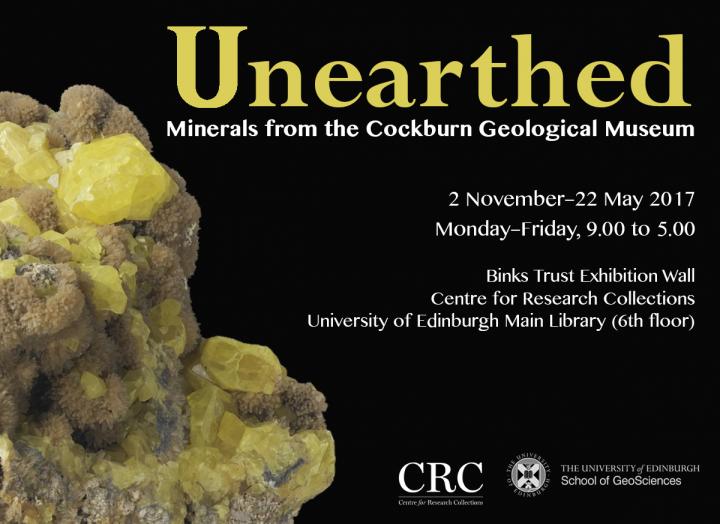
Enhance, Access and Understand: The University of Edinburgh and the Wellcome Trust
This is an exhibition and series of six lunch time talks celebrating the recent Wellcome Trust Research Resources funded projects undertaken at the Centre for Research Collections. This funding has made possible the cataloguing, conservation and care of collections for the benefit of public access.
All talks will start at 12:30pm in the Research Suite at the Centre for Research Collections and will last approximately 30 minutes. Talks are free to attend. Please click on the links below for more information and to reserve your space.

Wednesday, 10 August 2016: Towards Dolly: Edinburgh’s animal genetics archives
Wednesday, 24 August 2016: Rescuing the Godfrey Thomson archive
Wednesday, 7 September 2016: The limitations of the human eye: the Research Film Unit of the University of Edinburgh Institute of Animal Genetics
Wednesday, 21 September 2016: Conserving condoms: the challenges of preserving modern archives
Wednesday, 5 October 2016: Psychoanalysis in the archives: the collections of W.R.D. Fairbairn
Wednesday, 19 October 2016: Lothian Health Services Archive: cracking the case note conundrum
Given in Good faith: Unique Treasures from New College Library
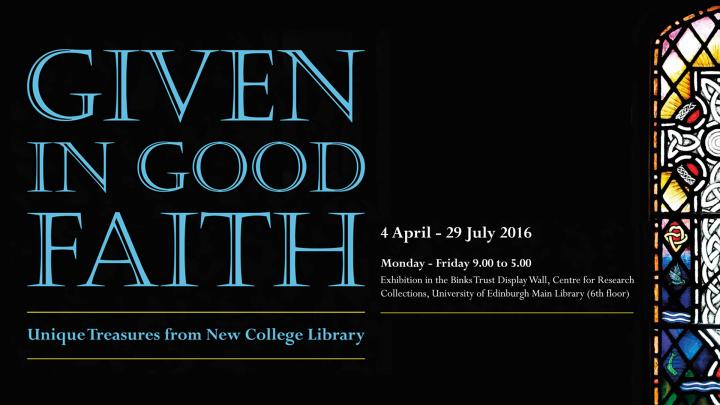
This spring we are celebrating New College Library’s historic library collections in our new exhibition in the Binks Trust Display Wall. ‘Given in Good Faith’ uses some of the Library’s treasures to explore themes of church history, worship, science and scripture.
From its earliest beginnings in 1843, New College Library was not only a working theological library but also a rare book and manuscript library, and the collections grew to incorporate the former University of Edinburgh Theological Library and the General Assembly Library. Items on display will include a first edition of the works of Calvin, a Bible said to be owned by Andrew Melville and an illuminated Hebrew manuscript.
The exhibition recognises the contribution of New College alumni Dr Robert Funk, whose gifts over the last ten years have allowed us to secure, develop and discover these collections for new generations of students and scholars.
Brown Paper and Imagination: Revealing the Edinburgh College of Art Revel
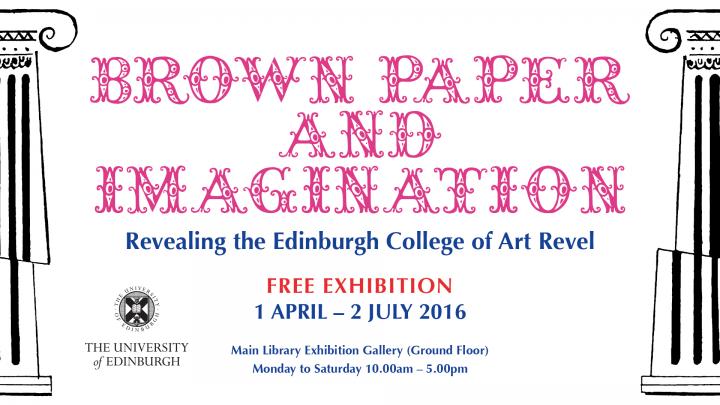
The Edinburgh College of Art annual Revel party is a theatrical fancy-dress extravaganza which, in the mid-20th century, was waited for with anticipation by staff, students, journalists and the Edinburgh art scene. The Revel was developed as an annual celebration of the student community, which came together to create an event where imagination ran riot.
This exhibition draws from the archive of Edinburgh College of Art, which has distinctive documentation of the Revel. Photographs, film and ticket designs, programmes and sets show the ingenuity, imagination and humour at its heart.
Extracts from the 1940s Edinburgh College of Art Student’s Handbook and the Scotsman Newspaper, will act as a guide through the stages of the event. From the preparation to the night itself, through to reflection and expectations for the next year.
Visual Dissection: The Art of Anatomy
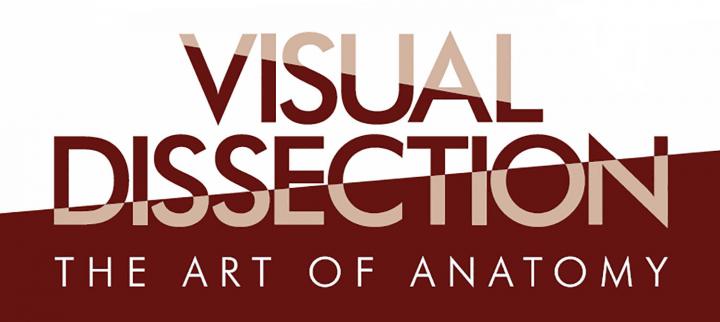
The Visual Dissection – The Art of Anatomy exhibition in the Main Library will give visitors an extremely rare opportunity to see a range of collections from the University’s Anatomical Museum, some of which have never been on display to the public before. The exhibition will tell the story of how anatomical representation of the body has changed over the years, taking you on a journey from the woodcuts and engravings of the 17th and 18th centuries, to the wax and papier mâché models of the 19th and 20th centuries, and then on to the digital technologies of today.
The late 18th and early 19th century was a golden age for the production of anatomical models and the Anatomical Museum collections are particularly rich with examples from across Europe. Exotic sounding manufacturers like ‘Maison Tramond’ and ‘Ziegler’ are well represented in the exhibition and visitors will be able to see for themselves the exquisite craftsmanship required to produce a resin cast of a lung or the corrosion cast of a foot. These objects have been used to help teach generations of medical students in the Anatomy Department at the University of Edinburgh. Many of the models on display are so accurate and detailed in their anatomical representation that they are still used for teaching today.
Part of the richness of this exhibition comes from the fact that these treasures of the Anatomical Collection are complemented by works from the University’s Fine Art and Special Collections. A particular notable example is the inclusion of Giambologna’s écorché figure of a horse (dating from 1585) from the Torrie Collection, which will be displayed for the first time alongside another of the University’s iconic items, Carlo Ruini’s Anatomia dell cavallo, infermita, et suoi rimedii (from 1618). As well as these rare illustrated books and the unique anatomical casts and models, the exhibition will also include a life sized hologram of the human body, believed to be the largest anatomical hologram ever made.
Visual Dissection presents the anatomical models on display as being a product of innovative collaborations between the worlds of art and science and perhaps just as importantly as works of art in their own right. Highlighting these collaborations in the displays is entirely appropriate as the exhibition itself is the result of a partnership between Doug Stevens, a 5th year student at Edinburgh College of Art, and the Anatomical Museum. Doug put the Visual Dissection exhibition proposal together as part of his Employ.ed internship. Doug’s initial exhibition vision was made into a reality thanks to the input of Anatomical Museum staff and additional funding from the Biomedical Teaching Organisation, Edinburgh College of Art, the School of Medicine and the Anatomical Society.
Visual Dissection – The Art of Anatomy opens in the University of Edinburgh Main library gallery on the ground floor on 4th December and runs until 5th March 2016, it is open Monday – Saturday from 10am to 5pm and the admission is free.
Towards Dolly: A Century of Animal Genetics in Edinburgh
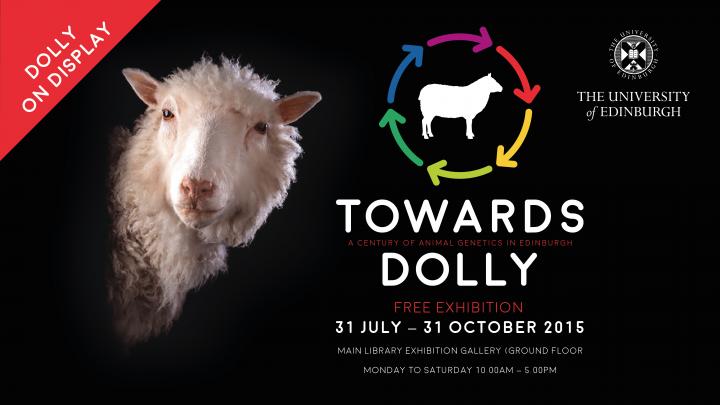
Edinburgh has played a vital role in the science which tells us who we are - genetics.
Dolly the sheep is a scientific icon and a household name. However, she is also a single chapter in a wider story which spans a century. Pioneers in Edinburgh and at Roslin have embedded concepts like genetic engineering and stem cell research in the public consciousness, stimulating debate and revolutionising science and medicine.
Featuring Dolly the sheep herself, on loan from National Museums Scotland, this exhibition celebrates the individuals and institutions who made, and continue to make, extraordinary advances in animal and human health. It will take you on a journey ‘Towards Dolly’ and beyond.
#towardsdolly
The exhibition is free and open to the public from 31 July to 31 October 2015, Monday to Saturday, 10am to 5pm.
Exhibition Gallery, Main Library, George Square, Edinburgh, EH8 9LJ
Towards Dolly exhibitions portal
Something Blue
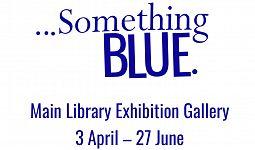
Blue has delighted and captivated humanity for thousands of years and is often used to describe immeasurable concepts, such as deep seas and summer skies. Despite this, it only occurs very rarely in nature and is the most difficult natural pigment to obtain.
This exploration of the colour and concept of blue brings together a wide range of exhibits from across the University’s collections. From blue stockings and opals to lullabies and rhapsodies, this exhibition offers new opportunities for academic and abstract associations.
#SomethingBlue
The exhibition is free and open to the public from 3 April to 27 June 2015, Monday to Saturday, 10am to 5pm.
Exhibition Gallery, Main Library, George Square, Edinburgh, EH8 9LJ
Something Blue Exhibition Website
The Thomas Nelson Collection: Covers in Colour
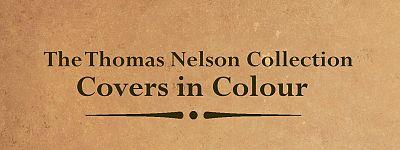
New Binks Trust Display Wall exhibition showcases the library of Thomas Nelson and Sons.
Thomas Nelson and Sons was an innovative Edinburgh-based publisher who brought literature to the worldwide market. This was made possible by the invention of a rotary press in 1850, which used stereotyped plates. From 1860 they were the leading publisher of cheap colour-printed titles, manufacturing a total of 10,000 items per day. The subjects ranged from educational and religious books, to new authors like John Buchan, but the Nelson specialty became uniform series of reprinted novels, such as Nelson Classics.
The items in this collection reflect the changes in culture and aesthetics that took place throughout the 20th century. Beginning with the staid, uniform editions of the New Century Library, progressing through stylish art deco illustrations, austere WWI and WWII paper, bright, pulpy dust-jackets from the ‘40s and ‘50s, and into rainbow-hued classics of the later decades.
The archives and library of Thomas Nelson and Sons are held by Special Collections and present rich opportunities for research and discovery.
The exhibition is free and can be seen at the Centre for Research Collections on the 6th floor of the Main Library from 3 March until 21 May 2015.
Emma Gillies: Rediscovered
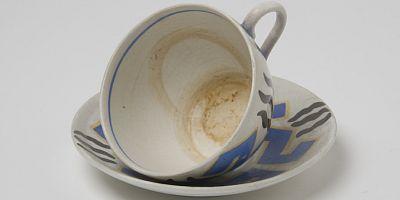
Emma Gillies: Rediscovered is a new exhibition celebrating a ‘lost’ collection of ceramics. Created in the 1920s and 30s, the works are by a graduate of Edinburgh College of Art (ECA), who also studied at the Royal College of Art in London.
Until now, Emma Gillies (who died at the age of 36) was perhaps best known as the sister of eminent Scottish painter, and former Principal of ECA, Sir William Gillies. Here, we introduce the people responsible for discovering and indexing her lost collection and working together to bring it to public attention.
The exhibition is free and open to the public until 7 March 2015, Monday to Saturday, 10am to 5pm.
Exhibition Gallery, Main Library, George Square, Edinburgh, EH8 9LJ
Emma Gillies Rediscovered blog post
Meet the team behind Emma Gillies Rediscovered
Sir Eduardo Paolozzi: Man + Machine
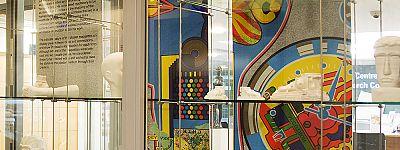
The Centre for Research Collections is showcasing a selection of maquettes from Paolozzi’s major bequest to the University’s Informatics Forum.
A founder of the Pop Art movement, sculptor Sir Eduardo Paolozzi was born in Leith, 1924. After attending classes at the Edinburgh College of Art he went on to shape a considerable career teaching sculpture and ceramics at a number of institutions, whilst establishing his artistic reputation world-wide. The culmination of an extensive preventative conservation project, the CRC exhibition focuses on Eduardo Paolozzi’s colossal production of plaster maquettes and his obsession with the relationship between mankind and technology. Also on display is Paolozzi’s bronze sculpture of world-famous entertainer Josephine Baker, taking centre-stage in the foyer of the CRC.
The exhibition is free and open to the public until 27 February 2015.
Centre for Research Collections, 6th floor, Main Library, George Square, Edinburgh, EH8 9LJ
Ladybird Books from Moray House School of Education Special Collections
A selection of Ladybird Books from the Moray House School of Education Special Collections is currently on display at the Centre for Research Collections.
Ladybird books were first published as a series of fiction for children by Wills & Hepworth in Loughborough, Leicestershire, in 1940, and were an instant success. They were of a uniform size, and the price of 2/6d (12.5p) remained the same until 1971. After World War II, Ladybird books diversified into educational non-fiction and helped children develop new interests, while they were often used by adults as an introduction to a subject of interest. In 1971 Wills & Hepworth became Ladybird Books, which was eventually acquired by the Penguin group. They continue to be published, but are now based in London. With their distinctive and instantly recognisable logo of a ladybird, the books have become a favourite of collectors, especially those from the 1940-1980. The details of their changes over the years hold a fascination for many. Moray House Library holds a collection of 284 Ladybird Books in their Special Collections. The books were selected for display by staff at Moray House Library. They will be exhibited at the CRC until Wednesday 12 November and can be viewed when the CRC is open.
John Macmurray: Personal Philosophy
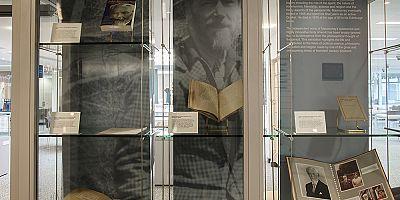
A new exhibition at the Centre for Research Collections celebrates the life of philosopher John Macmurray (1891-1976). Macmurray centred his philosophy on the understanding of what it means to be a person. His long and distinguished career as a writer, teacher and public speaker was sustained by his great gift for expressing complex ideas in simple, accessible language. The exhibition at the CRC highlights the life and contribution to the fields of political science, philosophy, education and religion made by one of the great and most unassuming minds of twentieth century Scotland.
The exhibition is free and open to the public Until 30 September 2014
The World History of Rashid al-Din 1314: A Masterpiece of Islamic Painting

The Centre for Research Collections and the Alwaleed Bin Talal Centre for the Study of Islam in the Contemporary World are delighted to announce the opening of The World History of Rashid al-Din, 1314: A Masterpiece of Islamic Painting, a major exhibition at the Main Library, University of Edinburgh.
Curated by the Prince Alwaleed Centre and the Centre for Research Collections, the exhibition features folios from the Jami’ al-Tawarikh (or “World History”) of Rashid al-Din: one of the most important illustrated medieval manuscripts to have survived from either East or West. Datable to 1314, it was produced in the city of Tabriz, a seat of power of the Ilkhanid rulers, descendants of the Mongol Chingiz Khan, who held sway over an empire encompassing Persia and large parts of present-day Azerbaijan and Turkey.
The exhibition is free and open to the public 2 August - 31 October 2014, Monday to Saturday, 10am to 5pm.
Rashid al-Din Exhibition Blog Post
Waverley 200 Exhibition

In April an exhibition celebrating the bicentenary of Sir Walter Scott’s seminal novel will be mounted at the CRC Display Wall, Centre for Research Collections, 6th Floor, Main Library.
The publication of Waverley (1814), Sir Walter Scott’s tale of the 1745 Jacobite uprising, introduced a dynamic new vision of history and landscape which inspired writers, musicians, artists throughout the world and drew countless visitors to Scotland.
The works on display are drawn from the Corson Collection of Walter Scott materials, a collection of nearly 7,000 books and over 10,000 artworks, which the university acquired from James C. Corson, former Deputy Librarian, in 1978.
This exhibition is open from 02 April 2014 to 04 July 2014, Monday to Friday, 09:00-17:00.
Fifty Years, fifty books...
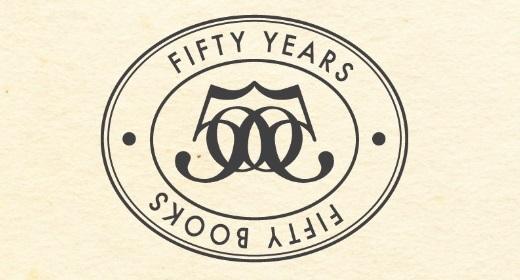
'Fifty Years, fifty books: purchases by the Friends of Edinburgh University Library, 1962-2012' is an exhibition hosted in the Exhibition Gallery of the University of Edinburgh's Main Library.
The exhibition features the highlights from fifty years of generous purchases made for the library collections by the Friends, including early editions of English drama and modern Scottish literary papers, beautifully illustrated ‘Birds of the Pacific Slope’ and facsimiles of medieval manuscript - including the famed Book of Kells. Many of these items in the exhibition are on public display for the very first time
The exhibition is open to the public from 28 March to 14 June 2014, Monday to Saturday, 10:00 to 17:00. All welcome, admission free.
Follow the exhibition blog link below for further details:
Fifty Years, Fifty Books - Exhibition Blog
If you would like to learn more about the Friends of Edinburgh University Library or are interested in becoming a member, please follow the link below:
About the Friends of Edinburgh University Library
Collect.Ed
Curiosities from the University's collections
"How strange this mass of ancient treasures, mementos of past pains and pleasures"

The Exhibition will be open to the public from 6th December 2013 until 1st March 2014
For thousands of years the obscure and unfamiliar has remained a source of inquiry. Early collecting focused on the unclassified and unique, aiming to impress and enlighten. This exhibition will bring together the unexpected and will showcase the rare and remarkable highlights from the University's Collections.
Selection of shells from Charles Lyell's collection, Geology Collection, University of Edinburgh
Innovative Learning Week (ILW) 17-21 February 2014
We will be running a series of events during Innovative Learning Week, involving a variety of Library and University Collections materials. All our events are open to all students and staff, but some require booking via MyEd in advance www.events.ed.ac.uk (under “All Providers” select Innovative Learning Week). All the events running during Innovative Learning Week can be found by accesing the ILW Events Calendar link below:
If you would like more details about any of these events please contact Serena Fredrick (serena.fredrick@ed.ac.uk)
Library Online Treasure Hunt
Questions posted online every day during Innovative Learning Week at 11am and 3pm (10 questions in total) Explore the University's online resources in this daily quiz to find out more about our services. A £50 voucher will be awarded to the first student to successfully complete this quiz. Additional prizes of £25 and £15 will also be awarded, and a £20 voucher will be awarded to the first member of staff to successfully complete the quiz. Questions will be posted on the Centre for Research Collections Facebook page:
ILW Events are open to all students and staff.
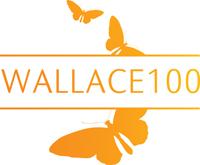
The Other Sides of Alfred Russel Wallace (1823-1913)
A display of works from the Wallace Collection.
- 12 November 2013 - 6 January 2014.
Alfred Russel Wallace was a pioneer in evolutionary biology and a pre-eminent field naturalist, as demonstrated in his magnum opus The Malay Archipelago (1869) and in his influential relationship with Charles Darwin.
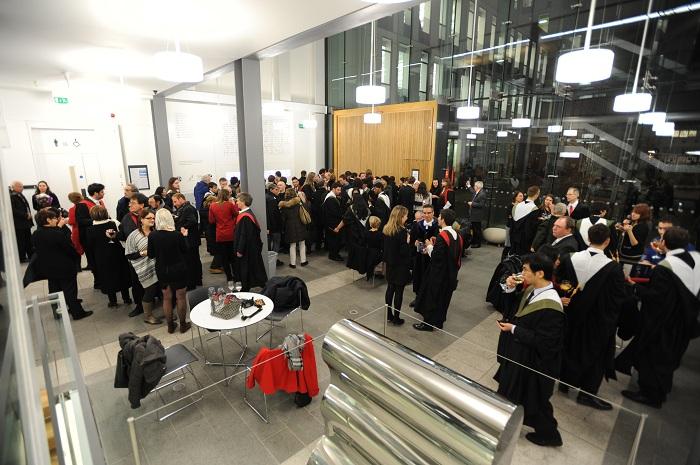
The works on display are drawn from Special Collection’s Wallace collection, which was gifted to the Library in 1993 by the Oxford University Museum of Natural History. It consists of some 470 volumes on spiritualism and the paranormal, socialism, esoteric religion, utopianism, even astrobiology (notably life on Mars).
Display of two of the five surviving early manuscripts of Gavin Douglas
Gavin Douglas was a poet, Edinburgh priest, bishop of Dunkeld, and the first translator of Virgil into any form of Anglic or English. The CRC exhibits two early manuscripts in commemoration of the Eneados’ 500th anniversary.
Douglas’ rendering of Virgil into Scots has been admired by many generations of readers and writers, including David Hume, Sir Walter Scott, and the poet Ezra Pound, who wrote of Douglas: “I am inclined to think that he gets more poetry out of Virgil than any other translator…"
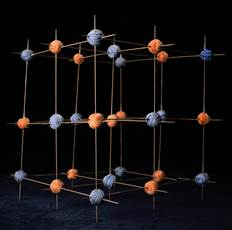
This public exhibition in the Main Library in George Square is timed to coincide with the Edinburgh International Festival and Fringe. The exhibition will focus on key themes to illustrate the contribution our School has made to Chemistry: Cradle of Chemistry (how Edinburgh has shaped the world), Chemistry and Economy (how Chemistry has contributed to economy and policy), Chemistry and Discovery (significant discoveries and achievements).
Highlights will include Joseph Black's balance (Black was the first to employ the analytical balance in chemical investigations) and Alexander Crum Brown's first model of sodium chloride, made with knitting needles and balls of wool!
Wednesday, 23rd October 2013

The CRC opens its doors to welcome you discover some of its secrets and hidden treasures. There is a variety of tours and open sessions that will give you access to our facilities and the collections we take care of.
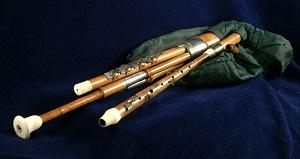
The exhibition, which covers 250 years of bagpipe history, is part of the celebrations of 250 years of St Cecilia's Hall. Titled from a traditional piping tune, The Piper’s Whim exhibition overturns the commonly-held views that bagpipes are solely a Scottish instrument and that the Great Highland bagpipe, familiar from the Tattoo and street buskers, is the only form of bagpipe.
There will also be various events taking place to celebrate the 250 years of bagpipe history. For more information, please visit:
What's On at the Musical Instruments Museums Edinburgh
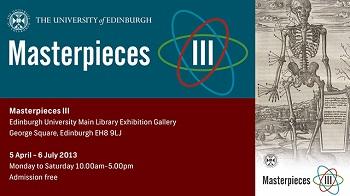
Masterpieces is a series of exhibitions which showcase the treasures held by the University’s libraries, museums, archives and galleries. This is the third and final exhibition in the series, in which we want to push the definition of a “masterpiece” to its limits. Focusing on the overall theme of science and medicine, we have chosen items which we feel reflect the themes of “science as innovation,” “science as art” and ”science as statement.”
The third exhibition will run from the 5th April - 6th July in the Exhibition Gallery in the Main University Library. Admission is free.
View the video on the CRC Facebook page

New exhibition on display on the 6th Floor of the Main Library. Welcome to the Centre for Research Collections’ Display Wall where you can discover some of the hidden treasures from the many different collections we are home to. This short-term exhibition highlights the wonderfully interesting items from museum objects to archives to rare books detailing the relationship between humans and animals.
The exhibition will be on until 26th July, so hurry up and come have a look at the Ceramic model of Sir Walter Scott’s favourite deerhound dog Maida and an image of James Cossar Ewart who is well-known for his cross-breeding experiments with horses and zebras. Did you know that his reputation ensured Edinburgh was regarded as a key centre for animal breeding and genetics research? On display are also a series of folklore items, including a milking song, a charm against foxes, and a protection charm for cattle, a few very interesting animal skulls and a folding anatomical model of a dog.
To see more images from the exhibition, please follow the link below:

View the images on our Facebook page
Conceived as part of the 250th Anniversary of English Literature celebrations, our 2012 Fringe Festival Exhibition, ‘City of Words: Writers, Readers and Critics in Edinburgh’ (3 August - 27 October 2012) told the fascinating story of how the writing, reading and criticism of literature have been entwined in Edinburgh over the past quarter millennium.
The exhibition displayed books, including signed and first editions, rarely seen letters and other artefacts illustrating the life and work of writers, critics and students involved in the study of literature at the University and the literary life of the city.
For more information, please visit:

